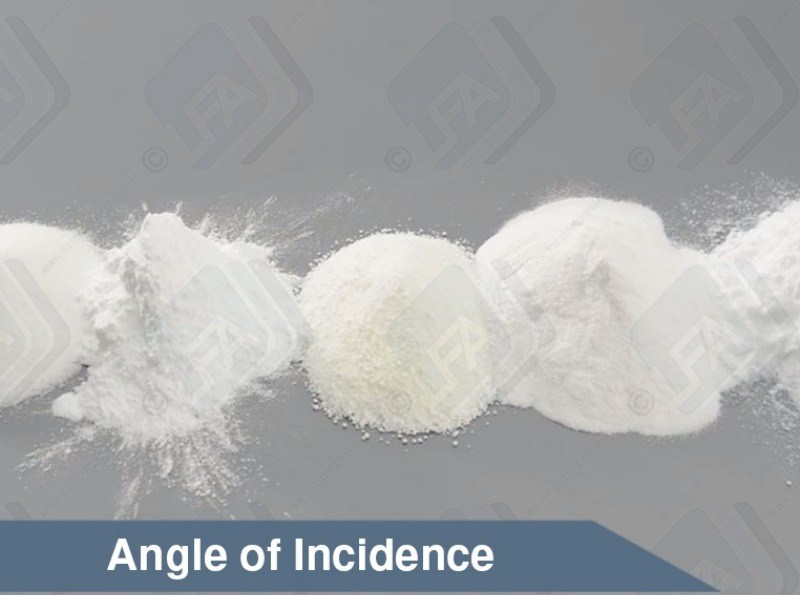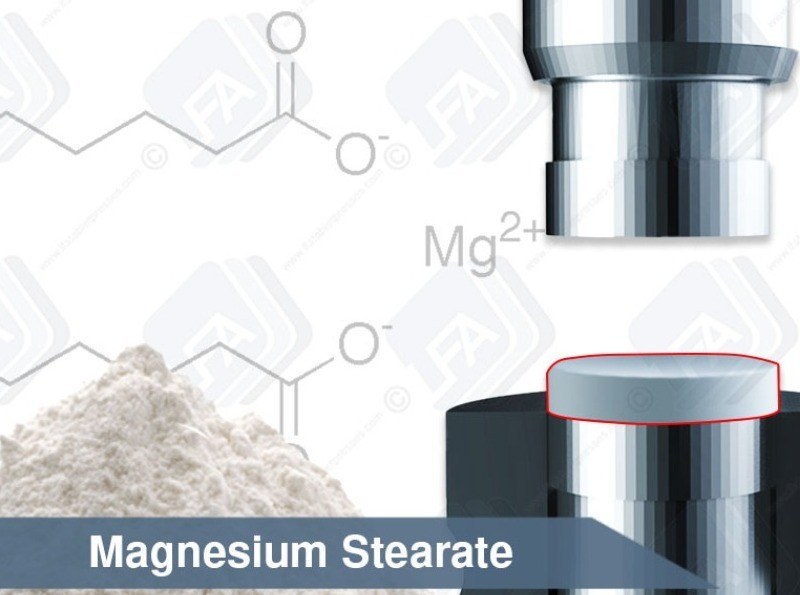Estearato de magnesio
é um pó branco fino. Sua finalidade principal é fornecer um lubrificante para cápsulas e comprimidos. Aumenta a fluidez, o que garante a eficiência através do processo de fabricação.
Estearato de magnésioé um dos mais populares agentes fluindo na indústria. É popular devido a como ela é eficaz como um lubrificante seco. É inerte e pode facilitar seu processo de formulação muito.
De estearato de magnésio é um sal de magnésio que também endereço: ácido esteárico. Ácido esteárico é uma gordura saturada 18 carbono longo que é freqüentemente encontrada em alimentos. Estearatos representam uma parte natural de cada único tipo de gordura de animal para vegetal. É um ácido graxo que pode ser encontrado em peixes, grãos integrais, ovos, manteiga, aves de capoeira, carne e produtos lácteos. Na carne, é um terço da gordura saturada. Isto é importante para a familiaridade do consumidor. Também retrata a segurança deste ingrediente. Não é algo que é novo para o corpo humano. Adiciona um elemento de segurança para seu produto.
Lubrificantes são cruciais em marcar. É por isso estearato de magnésio é resto comumente usado. O propósito de um lubrificante é melhorar os benefícios específicos de processamento. Existem três importantes funções de um lubrificante.
- Para diminuir o atrito na junção entre uma superfície de comprimidos e a ejeção de controle de parede de morrer. Isso irá reduzir o desgaste nas tábuas.
- Para evitar a solução de degola para as peças de uma máquina que está atualmente executando através de.
- Para aumentar o fluxo, reduzindo a fricção entre as partículas se.
Um excelente lubrificante irá formar uma forte camada sobre a superfície. Outro fator positivo é que é adversa a uma mudança de variáveis do processo. Variáveis de processo são uma parte dinâmica do processo que pode mudar de uma determinada forma. Isso geralmente será o fluxo, vasos e calor de verão. Se ocorrer qualquer destas alterações, shouldn ' t afetam o processo de fabricação.
De magnésio é uma parte importante da saúde. Um árabe com o processo da cavidade é frequentemente ausente da dieta humana apesar de muitos lugares que é encontrado. Ajuda para • manter o açúcar no sangue e sangue vasos da forma correta. Ajuda a forma DNA e proteína e mantém os músculos e nervos funcionando corretamente. As mulheres precisam de 320 miligramas diariamente enquanto região onde precisa 420 miligramas diariamente para a saúde excelente. "
Estearato de magnésio é:-
- "GRAS" (geralmente reconhecido como seguro) se ordenou
- designado como um aditivo alimentar na Europa
- fabricados a partir de óleos vegetais, mais comumente o óleo de palma e óleo de girassol.
podem ser fabricados por meio de hidrogenação (tratamento com hidrogênio). O resultado deste processo é um produto que deve ser tratado adequadamente.
Magnésio estearato não pode ser misturado com a grande explosão de poeira de Inglês pode ocorrer. Deve ser mantido afastado de chamas a todo o custo. Se estiver seco, pode ser carregado eletrostaticamente rodopiando e derramando entre outras ações. Se inalado pode causar tosse e se ingerido, vômitos podem ocorrer. Usar luvas de proteção, óculos de segurança e máscara durante a manipulação deste produto.
a fórmula de produtos químicos de estearato de magnésio é Mg (C18H35O2). Outros nomes para o estearato de magnésio são ácido octadecanóico e magnésio sal.
Este produto geralmente é publicado como primeira escolha como um lubrificante seco. Além disso, como um processo de cavidade confortável no corpo humano que pode ser consumido com segurança em uma base regular. Pode ser o excipiente perfeito para o seu produto.
| Specification | Estearato de magnesio |
|---|---|
| Net Weight (kg) | 1.1 |
Yes, it does not matter what age, size or sex the person consuming the products is. It is, however, important to check the intolerance data.
Yes, all of the excipients are safe for human or animal consumption. There are some precautions that should be taken when handling them and there are some people that might have intolerances to some of them. Information on this can be found in the products MSDS and Intolerance Data Sheet. This can be found in this section for every excipient.
Sim, todos os nossos Excipientes são extraídos de fontes naturais. Para mais informações, por favor visite as páginas de produto individuais.
Yes, we have bulk pricing for all of our excipients, and these can be found in this section. We offer bulk in 500 kg, 1 ton, 2 ton and 5 ton lots. The prices are set on these quantities as these are the amounts that will fit on pallets.
Yes. CoA stands for Certificate of Analysis this is also known some times as an MSDS (Material Safety Data Sheet) all of the information contained in a CoA is inside the MSDS for every LFA product which is emailed to you after purchase.
É improvável que você será capaz de produzir tablets sem a utilização de qualquer dos Excipientes. Certos produtos ligação sem Excipientes, mas não o fluxo através da máquina. Nós aconselhamos que você use um
Yes. There are two things at play here. You can get hygroscopic and hydrophobic excipients. Hygroscopic means that they take on water quickly, while hydrophobic means that they repel water.
There are products know as supper disintegrants. These products help the breakdown of tablets. At the moment LFA does not sell any supper disintegrants.
Magnesium stearate is hydrophobic this means that it will slow the breakdown of a tablet.
However, it is used in such small amounts that most of the time it will not make a difference to our customer's products. If they would like to be sure then they should conduct what is known as a disintegration test.
Firmapress - 2 years form batch date.
Dextrose - 3 years from batch date.
Dicalcium Phosphate - 3 years from batch date.
Microcrystalline Cellulose -
Magnesium stearate -
Lactose - 2 years from batch date.
Silica Dioxide - 2 years from batch date.
here are 6 steps that should be followed as a general rule of thumb when cleaning contact surfaces that have come into contact with powders:
Dry Clean - First you need to remove as much of the dry powder as possible. You can do this using a hover/vacuum. Make sure that the vacuum you are using has a filter good enough to handle fine dust.
Wet Clean - Next you need to perform a wet clean. This can be done with warm water and soap or if available an ultrasonic cleaner.
Rinse - Next you need to rinse off any soap with potable water (drinking water). You do not have to do this if you used an ultrasonic cleaner in the last step. It is important to ensure that all parts are thoroughly dried immediately after washing to avoid any rusting.
Sanitise - Next you need to sanitise the surface. This step is recommended by the FDA. There are a number of sanitising solutions available designed to be applied and left on.
Lubricate - You now need to lubricate any parts that require it. This should be with the appropriate grade oil or grease considering your use and greasing chart. Store - Finally store any of the parts in a cool dry place. If you are storing them on the machine then make sure the machine is in a temperature controlled environment with low humidity.
Oferecemos a Celulose Microcristalina, Estearato de Magnésio, Fosfato Bicálcico e Firmapress na nossa gama de excipientes.
A Celulose microcristalina é um agente de ligação, que contém o conteúdo do tablet juntos.
Fosfato bicálcico é um fluxo de agente e ajuda a mover os ingredientes através do aparelho, antes de serem comprimidos.
Estearato de magnésio é um lubrificante seco e ajuda-o novamente com o movimento de ingredientes através da máquina, mas também ajuda com a expulsão dos comprimidos da máquina. Por favor, note que o Magnésio Sterate não vincular por si mesma.
Firmapress é um tudo em um mix de Celulose Microcristalina, Estearato de Magnésio e Fosfato Bicálcico.
Dextrose - approx 100 mesh
Dicalcium Phosphate - approx 100 mesh
Microcrystoline Cellulose - approx 120-200
Magnesium sterate -
Lactose - 80 mesh
Silica Dioxide -
Firmapress - 100-200 mesh
Dextrose - Sweetener, binding agent, good for chewable tablets or candy.
Microcrystalline Cellulose - Binder, filling agent. Good at binding tablets and making them bigger. It can also be used as a filler for capsules.
Magnesium stearate - Dry Lubricant. This stops products from getting stuck to the tooling. It can also help with powder flow issues and caking issues.
Lactose - Binder, sweetener and bulking agent. It has a large mesh so it flows well but most people do not like it because of the intolerance issues.
Silica Dioxide - Flowing agent. This assist powders in flowing smoothly through the machines. It also helps with cacking issues where powders get stuck to the machine.
Firmapress - 2 years form batch date.
Dextrose - 3 years from batch date.
Dicalcium Phosphate - 3 years from batch date.
Microcrystalline Cellulose -
Magnesium stearate -
Lactose - 2 years from batch date.
Silica Dioxide - 2 years from batch date.
If your product does not bind well then we would recommend using MCC. This can be used in any % the limiting factor is the size of the tablet.
If the amount of MCC you would have to use would be too much or if you do not want to use MCC then you have 3 other options: Ask your supplier for a directly compressible or tabletable grade of your product. Spray dry your product. Wet granulate your product.
If your product is sticky then you will need to add a dry lubricant to your mix. For this, we recommend magnesium stearate.
We do not recommend that you add more than 1% to the mix as more than this can cause capping. If your product is still sticky at this point then we would recommend looking into granulation.
If your product or API is clumpy then you will need to add an anticaking agent. For this, we recommend silicon dioxide. We only recommend adding a maximum of 2% of this to the mix







